Blackpool Methodists - 1876 History of the Fylde by John Porter
Publication: History of the Fylde by John Porter
Date: 1876
John Porter's book makes several references to Blackpool's Methodist churches.
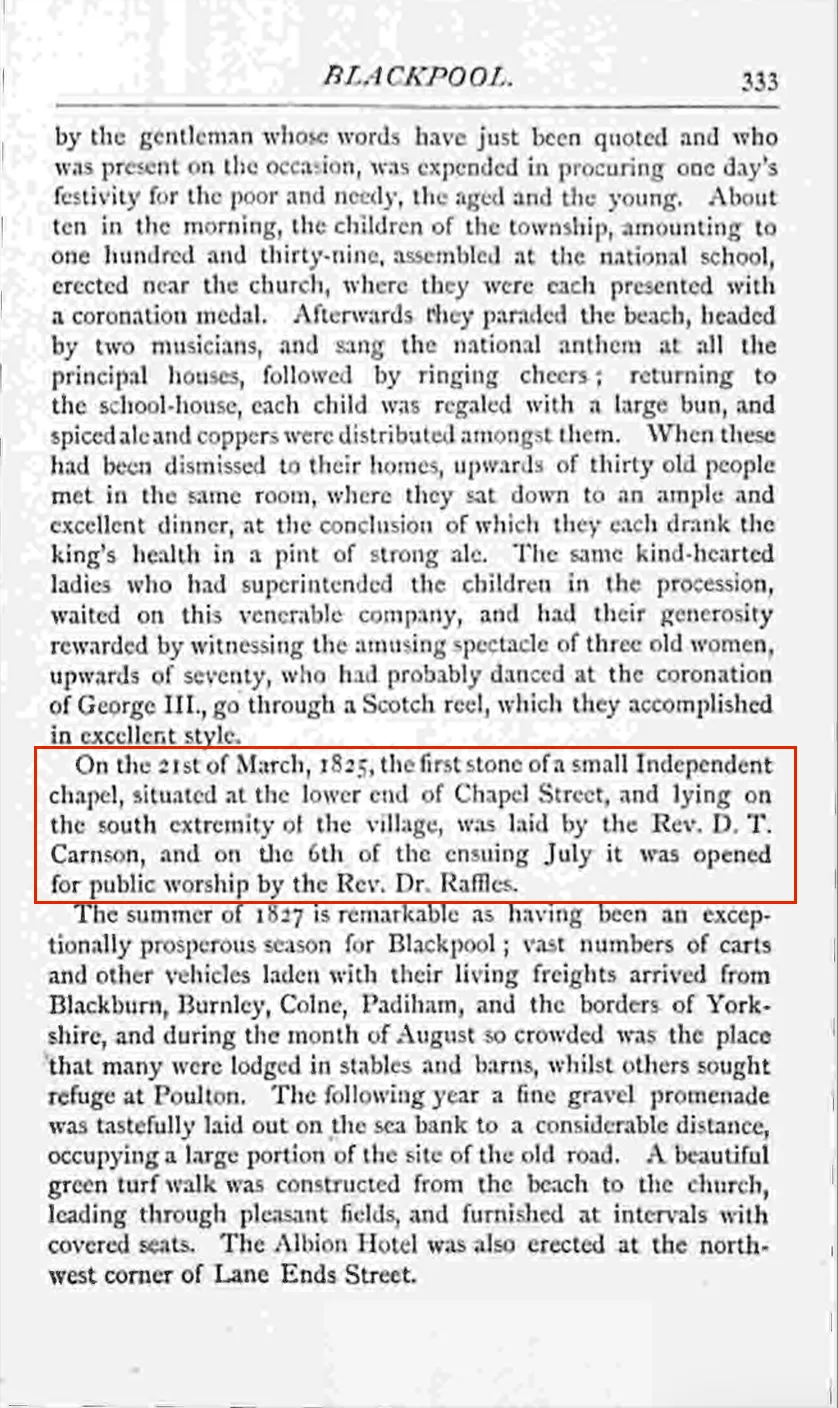
Page 333: 'On the 21st March 1825, the first stone of a small Independent chapel, situated at the lower end of Chaepl Street, and lying on the south extremity of the village, was laid by the Rev. D. T. Carnson, and on the 6th of the ensuing July it was opened for public worship by the Rev. Dr. Raffles.'
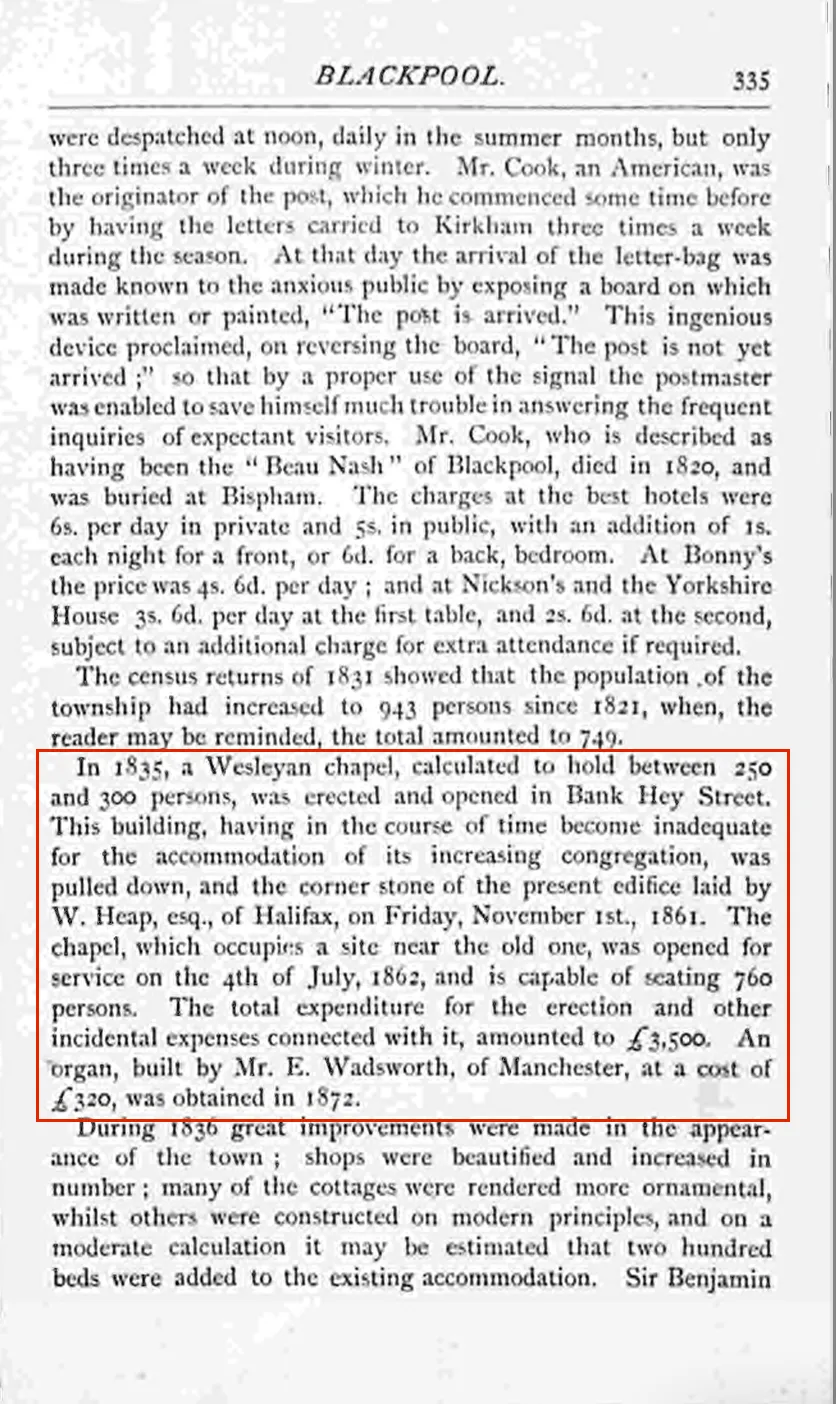
Page 335: 'In 1835, a Wesleyan chapel, calculated to hold between 250 and 300 persons, was erected and opened in Bank Hey Street. This building, having in the course of time become inadequate for the accommodation of its increasing congregation, was pulled down, and the corner stone of the present edifice laid by W. Heap esq. of Halifax, on Friday November 1st 1861. The chapel, which occupies a site near the old one, was opened for service on the 4th of July 1862, and is capable of seating 760 persons. The total expenditure for the erection and other incidental expenses connected with it amounted to £3,500. An organ, built by Mr E. Wadsworth, of Manchester, at a cost of £320, was obtained in 1872.'
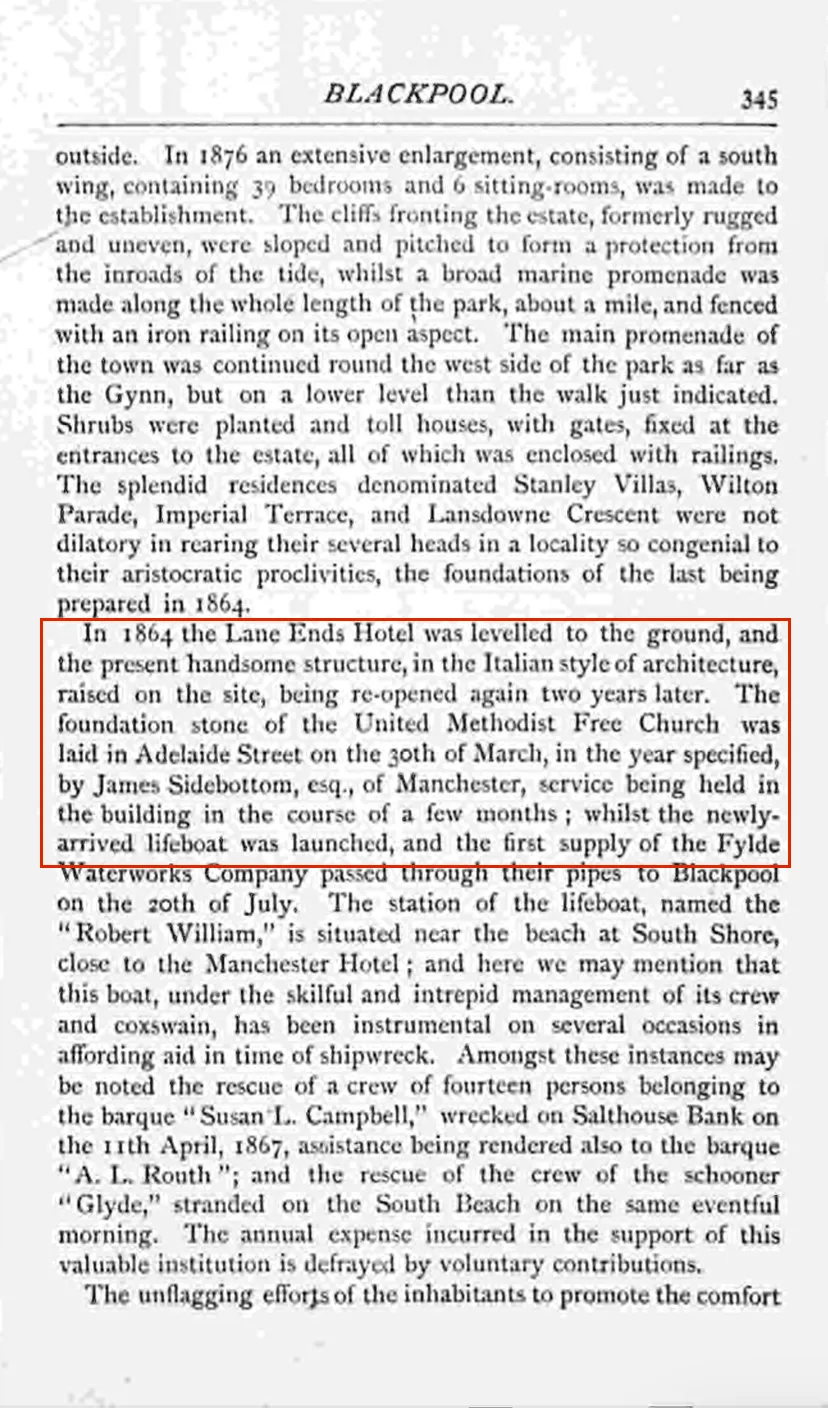
Page 345: 'In 1864...The foundation stone of the United Methodist Free Church was laid in Adelaide Street on the 30th of March, in the year specified, by James Sidebottom esq. of Manchester, service being held in the building in the course of a few months;'
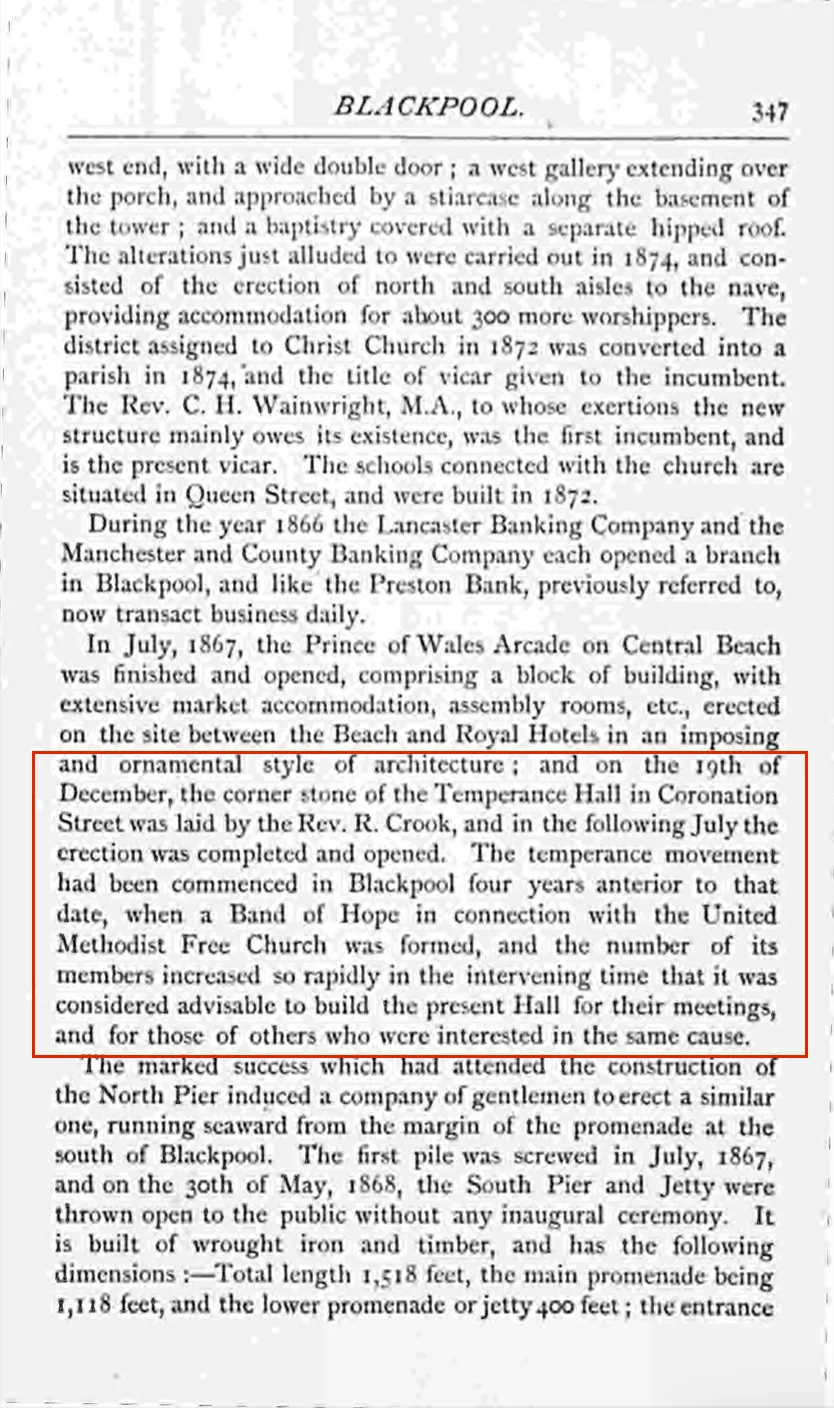
Page 347: '...and on the 19th of December [1867], the corner stone of the Temperance Hall in Coronation Street was laid by the Rev. R. Crook, and in the following July the erection was completed and opened. The temperance movement had been commenced in Blackpool four years anterior to that date, when a Band of Hope in connection with the United Methodist Free Church was formed, and the number of its members increased so rapidly in the intervening time that it was considered advisable to build the present Hall for their meetings, and for those of others who were interested in the same cause.'
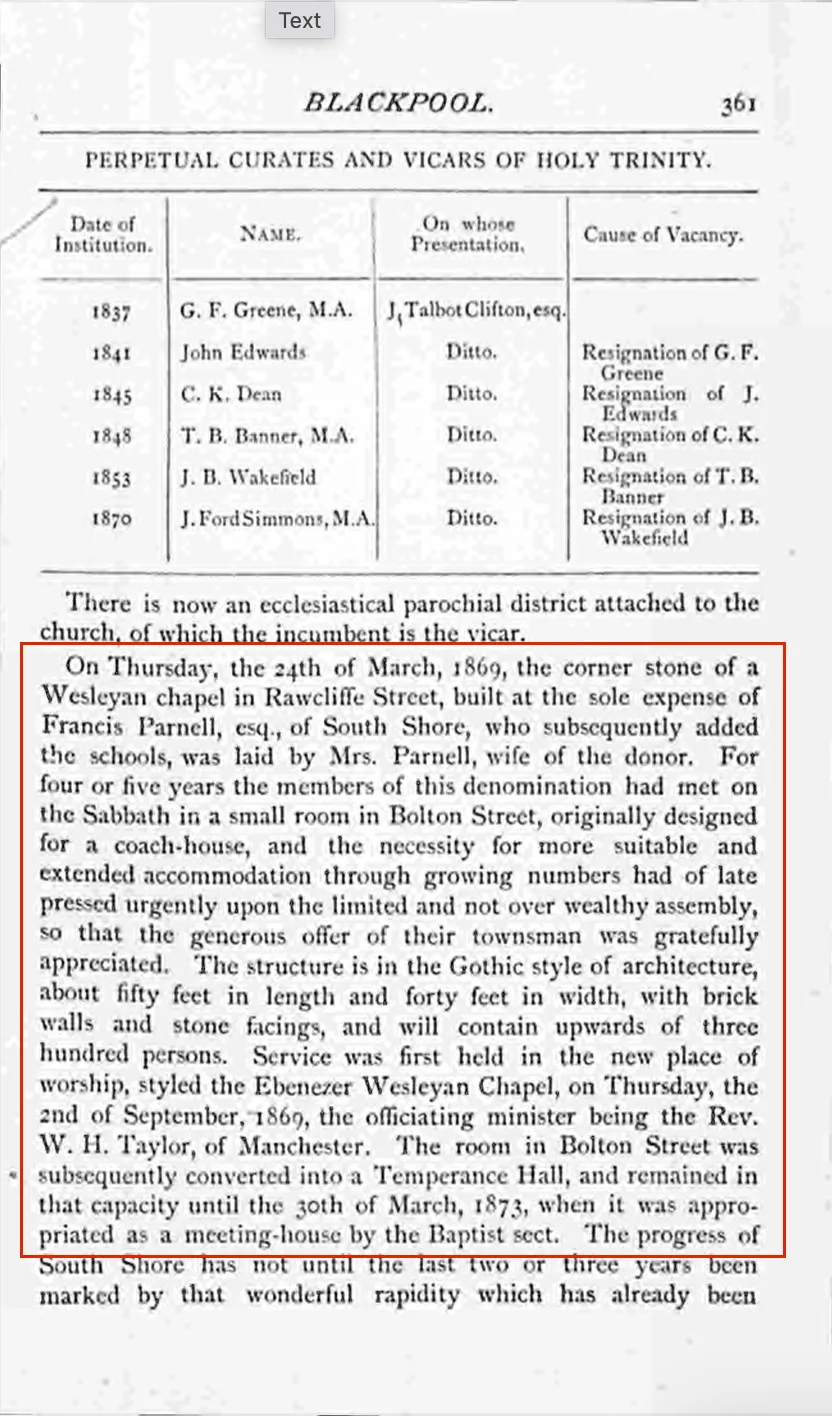
Page 361: 'On Thursday the 24th of March 1869, the corner stone of a Wesleyan chapel in Rawcliffe Street, built at the sole expense of Francis Parnell esq., of South Shore, who subsequently added the schools, was laid by Mrs Parnell, wife of the donor.'
'For four or five years the members of the denomination had met on the Sabbath in a small room in Bolton Street, originally designed for a coach house, and the necessity for more suitable and extended accommodation through growing numbers had of late pressed urgently upon the limited and not over wealthy assembly, so that the generous offer of their townsman was gratefully appreciated.'
'The structure is in the Gothic style of architecture, about fifty feet in length and forty feet in width, with brick walls and stone facings, and will contain upwards of three hundred persons. Service was first held in the new place of worship, styled the Ebenezer Wesleyan Chapel, on Thursday, the 2nd of September 1869, the officiating minister being the Rev. W. H. Taylor of Manchester.'
'The room in Bolton Street was subsequently converted into a Temperance Hall and remained in that capacity until the 30th of March 1873 when it was appropriated as a meeting house by the Baptist sect.'